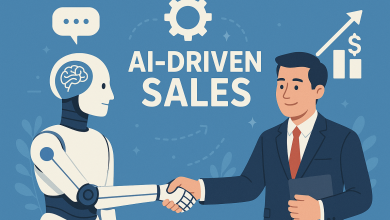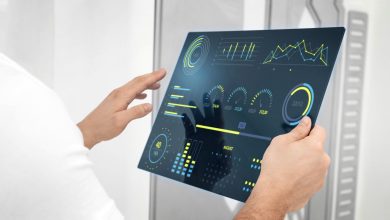
Modern advertising is constantly seeking new formats that can attract attention and retain consumer interest. Product photographs have long been considered a universal solution for brand presentation, but they have limitations: they are static, lack flexible personalization, and have limited audience engagement. They are being replaced by innovative solutions — interactive 3D models and tools like a 3D product configurator, which allow customers to view a product from all angles, change its characteristics, and create customized options in real time. Whether 3D models can be more effective than traditional photographs in advertising is becoming increasingly relevant.
Why Implement 3D Models in Business?
3D models can be a more effective visual aid than real photos. And there are many arguments to support this assertion, which we’ll now examine.
Reason 1. 3D models are cheaper than a photo shoot
The ROI of advertising campaigns using 3D modeling is often higher than that of campaigns using traditional creative methods — video and photos. If you’re creating photos or videos for advertising, you need a budget:
- for studio rental;
- for a photographer;
- for models, stylists, makeup artists, etc.
And this is just the basic option. You won’t be able to significantly influence the result: the shoot is over, and to change anything significant in the footage, you’ll have to reshoot. And that’s expensive and time-consuming.
If you use 3D modeling, then:
- You only need to invest in 3D content production through an agency or by hiring the appropriate specialists;
- You can make changes in minutes (change the angle, set the lighting, adjust objects), which simplifies the visual process.
Reason 2. 3D models show what doesn’t yet exist
With 3D modeling, you can create a photorealistic visualization of an object that doesn’t yet exist. This could be a prototype for a new product design, for example:
- house plan;
- furniture design;
- clothing model;
- technical model;
- packaging example, etc.
A single 3D model will show your idea and its features from all angles: you can move the object 360 degrees, using its actual dimensions and realistic parameters in different contexts.
Reason 3. 3D modeling: differentiating yourself from competitors
Modern technologies in advertising campaigns signal to clients that your business is constantly evolving and keeping up with the times. 3D technologies, particularly animation, are an excellent way to remind clients of this through demonstrations, promotions, and innovative advertising.
Reason 4. 3D models accurately depict the product
Photographs aren’t always accurate, and consumers understand this. Photos can be retouched, and the product can be presented from a flattering angle.
Remember the photos of small studios on rental and sales websites: they often appear several times larger. Many consumers in various industries have encountered similar tricks.
3D visualization will accurately depict the object, allowing you to be honest with the buyer. A 3D model can show:
- the size of the object;
- its shape;
- the relationship of the object’s size to other objects.
For example, if you sell fireplaces, you can simulate the location of the fireplace inside the house, depict a chair next to it to understand the size, and place a vase on the fireplace to demonstrate the width/depth of the product.
Reason 5. 3D marketing sells more than just the product
To truly engage customers, you need to infuse your product with values that are important to your target audience.
Many people think that 3D visualization is just a model on a lifeless, monochromatic background. But today, modeling allows you to create expansive scenes of houses, apartments, streets, and nature. This helps not only to show the size and shape of an object but also to create a mood and atmosphere. For example, you can depict a fireplace in a specific interior or athletic shoes in the mountains.
Reason 6. Easy scaling to suit advertising needs
The problem with traditional advertising media is the difficulty of scaling. For example, a photo shoot made for brochures won’t work on a billboard, and a vertical photo won’t work on a horizontal banner.
The dimensions of 3D models and visualization scenes can be changed. Need a banner for targeted online advertising today? Easy! Need a banner for outdoor advertising tomorrow? No problem! You can easily edit the scene to suit the advertising theme.
Reason 7. 3D models add interactivity
Customers can not only look at a 3D model of a product but also interact with it. For example, they can open cabinet drawers. You can go further and allow consumers to customize the product, for example, by changing the position of the shelves in the cabinet, the color of the doors, or the design of the handles. People are much more willing to buy something they’ve tested or tried on.
Unlike traditional custom furniture manufacturing, there’s no need to travel to a studio, meet with the furniture factory’s designers, etc. Using a simple app, you can create your perfect design in just a few minutes and pay for it immediately.
Modern companies are increasingly implementing 3D product configurators, and the PIXREADY team offers solutions that make the product selection process as convenient and engaging as possible for customers.
Who Benefits From 3D Modeling?
3D modeling is useful for businesses that:
- Manufacture designer products. For example, mugs, thermoses, T-shirts, etc.
- Create products with many unique characteristics, such as color, texture, and components. For example, furniture, appliances, vehicles, housing construction, clothing, jewelry, etc.
- Manufacture complex equipment that requires a visual demonstration of its operating principles. For example, folding ladders, automated trailers, industrial equipment, etc.
3D marketing is a cost-effective, technologically advanced, and innovative choice.
Wrapping It Up
Using 3D models in advertising campaigns opens up new horizons for businesses. Interactivity, personalization, and customer engagement make 3D visualization a powerful tool, often significantly superior to static images. Integrating a 3D configurator into a marketing strategy allows brands not only to increase sales but also to build customer trust through transparency and visibility. If you want to take your business to the next level and harness the full benefits of 3D visualization, consider PIXREADY — experts in creating high-quality 3D solutions for advertising and e-commerce.




